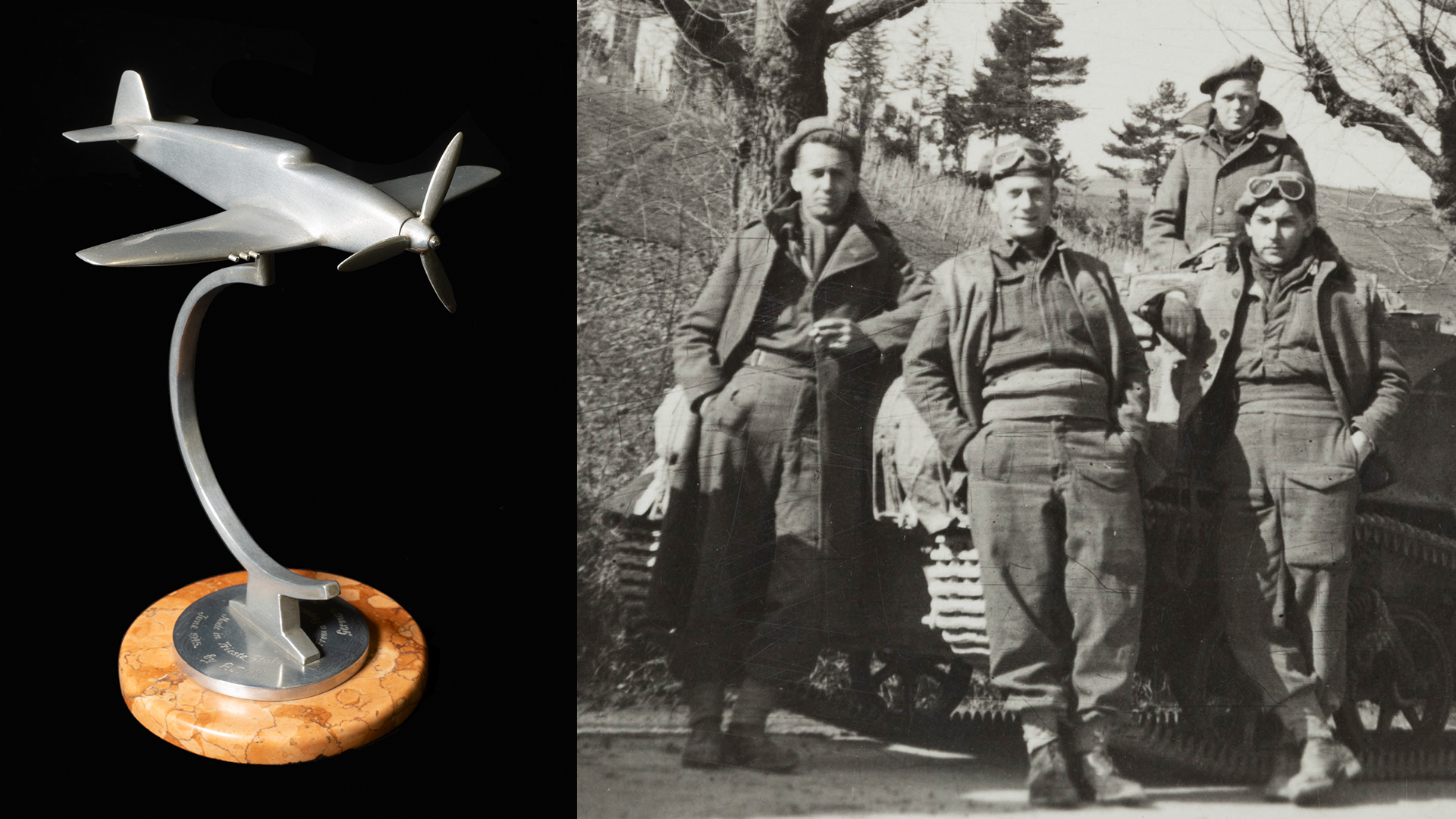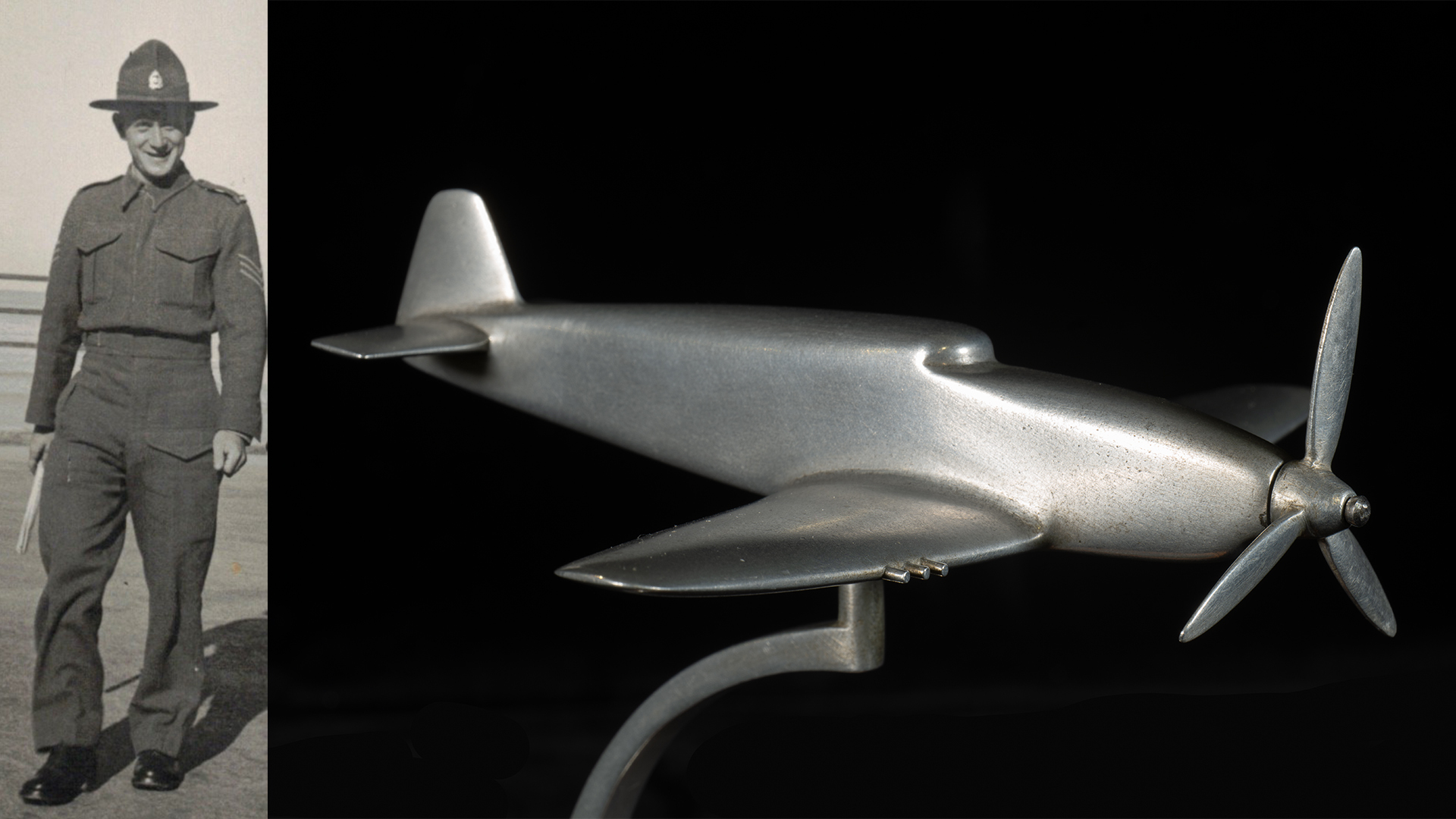A model of an American fighter plane made by a Canterbury soldier in World War Two became a memento for his family of the man, his service and craftsmanship.

Staff Sergeant Patrick Joseph (Pat) Ell forged the model of a P-51 Mustang from the propeller of a downed German plane while in Trieste, Italy. Canterbury Museum was fortunate to be gifted the unique memento this year.
Pat was the son of Archie Ell, a builder and maker of violins and cellos, and Celeste Ell (nee Blake). Pat was also the nephew of Harry Ell, well known for his work in the construction of the Signs of the Takahe, Kiwi, Bellbird and Packhorse and advocacy for the Summit Road on Christchurch’s Port Hills.
Pat was working as a carpenter when he was called up for military service and was posted overseas with the 26 Battalion A Company with the Second New Zealand Expeditionary Force in December 1942. After some specialist training in Egypt, Patrick and his regiment were posted to Italy and became part of the Italian Campaign. In April 1944, while in the front line in the Fourth Battle of Monte Cassino, he was nearly killed in a night attack by a German flame thrower. After the battle he requested a transfer to the 3-inch mortar section. Mortars provided valuable support to front line troops by firing mortar bombs to suppress or destroy enemy forces and equipment.

In July 1945, after fighting had ceased and while camped in the hills near Trieste, Pat spent his free time making this beautiful memento. He first made a model in wood and then a mould was created in modelling clay. The metal used for the casting was a piece of propeller blade that Pat had cut from a downed German Messerschmitt Bf 109 fighter. This was melted and poured by a metal casting business in Trieste. The cast and its stand were then filed and sanded by hand. A circular piece of Italian marble was made for the base of the stand. The model is beautifully made with the propellor and stand made as a separate pieces and three M2 Browning machine guns are visible on each wing.

For Pat and the men fighting on the ground, the choice of subject reflects the importance of support provided to them by the Mustang fighter-bombers. The Mustang squadrons used a "Cab Rank" system where a group of aircraft remained airborne to quickly attack new targets. The quick response of the Mustangs saved countless lives on the ground.
Pat returned home to his beloved wife Reita at the end of the war. The model survived its journey to New Zealand intact and was a valued personal memorial of the time Pat spent at war and a much beloved memento for his family to both the man and his craftsmanship.
This unique artwork has become part of Canterbury Museum's collection as part of our work to care for the community's taonga, tell stories that are important to Cantabrians and celebrate Aotearoa New Zealand's place in the world.





